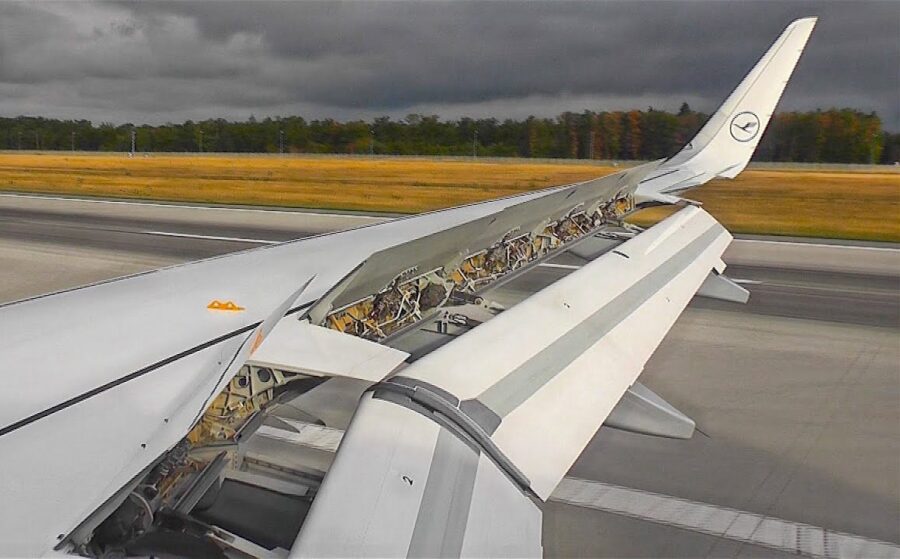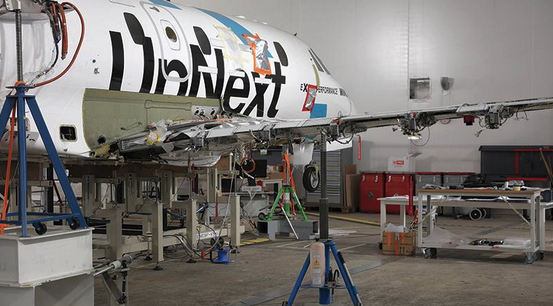Airbus Prepares Morphing “Extra Performance Wing” for 2026 Flight Test to Shape A320 Successor

Airbus is moving one step closer to a breakthrough in wing technology as it prepares its “Extra Performance Wing” demonstrator—nicknamed the X-Wing—for flight tests in 2026. Before taxi trials begin, the aircraft will undergo extensive ground vibration and wing-loading tests this year to validate the new composite structure and advanced control systems. The X-Wing project, which blends cutting-edge aerodynamics with bird-inspired adaptability, could become a centerpiece of Airbus’ next-generation single-aisle (NGSA) program—an A320 successor targeted for entry into service in the late 2030s.
Funded by France, Germany, and the U.K. and integrated with Airbus’ broader “Wing of Tomorrow” initiative, the Extra Performance Wing is being built and tested by Airbus UpNext, the company’s innovation arm. Engineers have installed a high-aspect-ratio composite wing onto a modified Cessna Citation VII business jet, scaled at roughly one-third the size of a future single-aisle aircraft. The wing aims to demonstrate a 5–10% efficiency gain over today’s narrowbodies by combining reduced drag with a morphing trailing edge—features that could help Airbus maintain its dominance in the 150–240 seat market.
Traditional longer wingspans reduce drag but require heavier reinforcement to withstand turbulence, adding weight and eroding efficiency. Airbus’ solution is a hinged wingtip: at the root of the extension, a semi-aeroelastic hinge unlocks in heavy turbulence to relieve loads, eliminating the need for extra structural weight. To mimic a bird’s ability to adapt to flight conditions, the X-Wing’s trailing edge integrates three large flaps, each with four rapidly adjustable tabs. These moving elements can modify chord and camber in real time, optimizing lift and drag based on altitude, speed, and aircraft weight.

The demonstrator’s wing has an aspect ratio above 15—compared with about 10 on an A320—and spans 20 m (66 ft.), including 2-m movable tips. Earlier in the program, Airbus tested a one-quarter scale model in its Filton, U.K. wind tunnel. Aerotec & Concept, a specialist in business jet conversions, designed and installed the metal transition boxes that link the Citation fuselage to the composite wing. These 1-m span boxes double as fuel tanks, since the new wing itself does not carry fuel, and also provide landing gear attachment points.
Inside, Airbus has replaced the Citation’s conventional flight control system with fly-by-wire technology representative of Airbus commercial aircraft. Every control surface—including those on the tail—will be electrically actuated, allowing engineers to push the new systems to their limits. For safety and cost reasons, the aircraft is being prepared for uncrewed flight tests: pilots will control the plane remotely from the ground. Technicians have removed the control columns, installed a remote-control interface, and replaced the transparent windshield with a metallic panel. A lidar sensor in the nose will “see” turbulence half a second ahead, commanding the control surfaces to react automatically.
The testbed is also being equipped with a dense network of sensors and videogrammetry markers to measure wing deformation, aileron and spoiler movement, and overall aerodynamic performance. Airbus has applied to France’s DGAC for a permit to fly and plans to operate the demonstrator out of Cazaux in southwest France, over the Bay of Biscay.
Ground vibration testing and wing-loading trials are slated to wrap up by year’s end, correlating real measurements with computer models. Taxi tests are scheduled for the second quarter of 2026, with first flight expected in mid-2026. “We can use the demonstrator until the end of 2026, and we intend to fly as many hours as possible by then,” says Sébastien Blanc, the project’s technical director.
If successful, the Extra Performance Wing could help Airbus deliver a lighter, more efficient A320 successor with a step change in fuel burn and emissions—an attractive proposition for airlines under pressure from regulators and investors to decarbonize. By marrying high-aspect-ratio aerodynamics with morphing control surfaces, Airbus hopes to achieve what it calls “nature-inspired efficiency” and keep its single-aisle lineup ahead of Boeing and future entrants well into the 2040s.
Related News: https://airguide.info/?s=airbus
Sources: AirGuide Business airguide.info, bing.com, aviationweek.com, airbus.com/en/innovation/innovation-ecosystem/airbus-upnext
